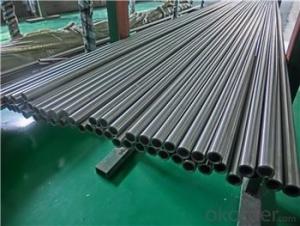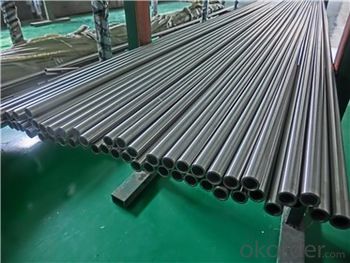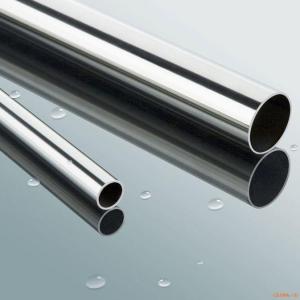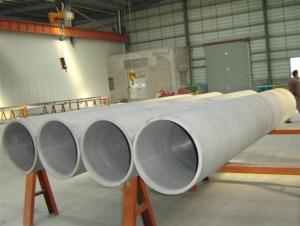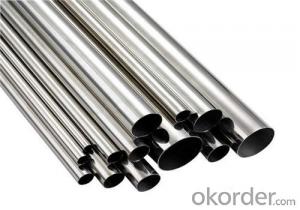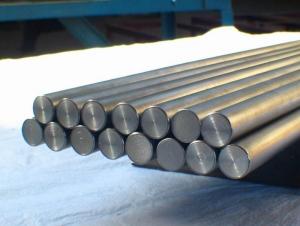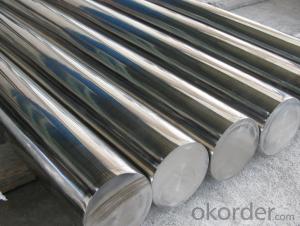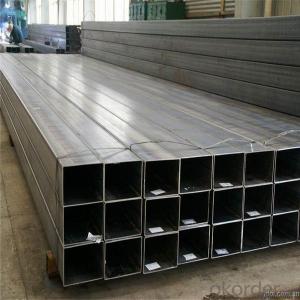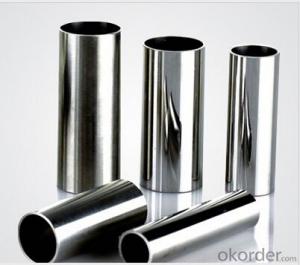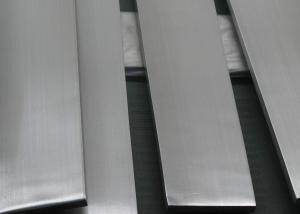304 /316/321stainless steel seamless pipe
- Loading Port:
- Qingdao
- Payment Terms:
- TT OR LC
- Min Order Qty:
- 100 kg
- Supply Capability:
- 1000000 kg/month
OKorder Service Pledge
OKorder Financial Service
You Might Also Like
Specification
Stainless steel pipe is a hollow long round steel, widely used in petroleum, chemical, medical, food, light industry, machinery, instrument, such as industrial pipeline and mechanical structure parts, etc. In addition, in the bending and torsional strength phase, the weight is lighter, it is widely used in the manufacture of machinery parts and engineering structures. Also commonly used for the production of various kinds of conventional weapons, barrel, shells, etc. We also supply stainless steel parts, such as the three links, elbow, flange etc. Looking forward to establishing a long-term business relationship with you.
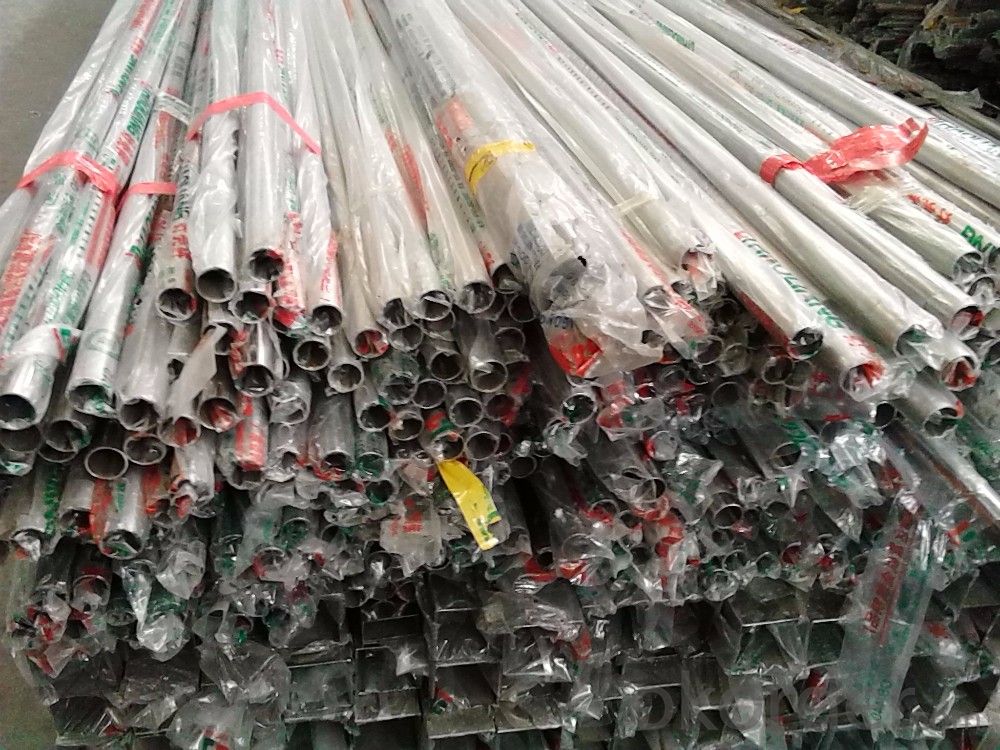
Item
| Description |
| Product name | Stainless steel pipe/tube |
| Material | 201 202 304 304L 316 316L 321 309 310 310S 430 410 |
| Thickness | 0.5mm-100mm |
| Outer diameter | 10mm-1000mm |
| Length | 6meters or as per customized |
| Technical treatment | Cold rolled and Hot rolled |
| Application | decorative pipe, construction pipe, mechanical pipe, stove heat exchanger tubes, food hygiene pipe, water and liquid delivery |
| Standard | ASTM GB KS AISI SAE AWS ASME BS DIN CAS API KR NK LR AB JIS |
| Certification | BV ISO SGS API WSF |
| Dimension(L*W*H) | 0.5mm*6mm*6000mm-8mm*610mm*6000mm |
| Trade terms | Pay terms: L/C T/T west union |
| Price terms: FOB CIF EXW CFR |
| Test | Squash test, extended test, water pressure test, crystal rot test, heat treatment, NDT | |||||
| Chemical Composition | 201 | 202 | 304 | 316 | 430 | |
| C | ≤0.15 | ≤0.15 | ≤0.08 | ≤0.08 | ≤0.12 | |
| Si | ≤1.00 | ≤1.00 | ≤1.00 | ≤1.00 | ≤1.00 | |
| Mn | 5.5-7.5 | 7.5-10 | ≤2.00 | ≤2.00 | ≤1.00 | |
| P | ≤0.06 | ≤0.06 | ≤0.045 | ≤0.045 | ≤0.040 | |
| S | ≤0.03 | ≤0.03 | ≤0.030 | ≤0.030 | ≤0.030 | |
| Cr | 16-18 | 17-19 | 18-20 | 16-18 | 16-18 | |
| Ni | 3.5-5.5 | 4.0-6.0 | 8.0-10.5 | 10.0-14.0 | ||
| Mo | 2.0-3.0 | |||||
| Mechanical Property | Material Item | 201 | 202 | 304 | 316 | |
| Tensile Strength | ≥535 | ≥520 | ≥520 | ≥520 | ||
| Yield Strength | ≥245 | ≥205 | ≥205 | ≥205 | ||
| Extension | ≥30% | ≥30% | ≥35% | ≥35% | ||
| Hardness (HV) | < 253 | < 253 | < 200 | < 200 | ||
- Q: What is the difference between annealed and pickled stainless steel pipes?
- Annealed stainless steel pipes are heat-treated to remove internal stresses, making them softer and more malleable. This process improves their machinability and allows for easier forming and welding. On the other hand, pickled stainless steel pipes undergo a chemical treatment (usually with an acid solution) to remove surface impurities and oxide layers. This process enhances the corrosion resistance of the pipes and provides a smooth, clean surface finish.
- Q: Is food grade stainless steel GB9684 304?
- Food grade stainless steel is in line with the GB9684 standard stainless steel.
- Q: What is the difference between SCH and XS stainless steel pipes?
- SCH and XS are two different schedules or pipe thicknesses used in stainless steel pipes. SCH stands for schedule and XS stands for extra strong. The main difference between SCH and XS stainless steel pipes lies in their wall thickness. SCH pipes have a standard thickness range, while XS pipes have a thicker wall compared to SCH pipes. SCH pipes are commonly used for general-purpose applications where high pressure is not a major concern. They are available in various schedules, such as SCH 5, SCH 10, SCH 40, and so on. The higher the schedule number, the thicker the wall of the pipe. SCH pipes are suitable for low to medium pressure applications. On the other hand, XS pipes are designed to handle higher pressure and are often used in more demanding applications. XS pipes have a thicker wall compared to SCH pipes, providing additional strength and durability. They are commonly used in industries such as oil and gas, chemical processing, and power plants, where high pressure and corrosive environments are present. In summary, the main difference between SCH and XS stainless steel pipes is the thickness of their walls. SCH pipes have a standard thickness range, while XS pipes have a thicker wall specifically designed for high-pressure applications.
- Q: Are stainless steel pipes suitable for pharmaceutical industries?
- Pharmaceutical industries find stainless steel pipes to be highly suitable. The reason is that stainless steel possesses excellent corrosion resistance and can withstand high temperatures and pressure. These qualities are essential in pharmaceutical applications, where maintaining product purity and preventing contamination are crucial. The non-reactive nature of stainless steel pipes ensures that they do not interact with the pharmaceutical products being transported. This guarantees the integrity and safety of the drugs. Additionally, stainless steel pipes are easy to clean and sanitize, making them ideal for pharmaceutical manufacturing processes that require frequent cleaning. Moreover, stainless steel pipes adhere to the strict regulations and standards set by pharmaceutical authorities. This ensures that the industry's quality and safety requirements are met. They can also be customized to meet specific needs, such as different sizes, shapes, and wall thicknesses, allowing for flexibility in design and installation. In conclusion, stainless steel pipes offer numerous advantages for pharmaceutical industries. These advantages include durability, resistance to corrosion and contamination, ease of cleaning, and compliance with industry standards.
- Q: Can stainless steel pipes be used for water treatment facilities?
- Yes, stainless steel pipes can be used for water treatment facilities. Stainless steel is a preferred material choice for water treatment facilities due to its excellent corrosion resistance properties. Water treatment facilities deal with various chemicals and substances that can cause corrosion in pipes over time. Stainless steel, being highly resistant to corrosion, provides a durable and long-lasting solution for transporting water and other fluids in these facilities. Additionally, stainless steel pipes have a smooth surface finish, which inhibits the growth of biofilms and reduces the risk of contamination in water treatment processes. This is crucial for maintaining the quality and safety of the treated water. Another advantage of using stainless steel pipes in water treatment facilities is their ability to withstand high temperatures and pressures. They can handle the demanding operational conditions often encountered in water treatment processes. Furthermore, stainless steel pipes are hygienic and easy to clean, making them ideal for use in water treatment facilities where cleanliness and sanitation are of utmost importance. Overall, stainless steel pipes offer a reliable, corrosion-resistant, hygienic, and durable solution for water treatment facilities, making them a suitable choice for transporting water and other fluids in such settings.
- Q: What is the typical wall thickness for stainless steel pipes?
- The typical wall thickness for stainless steel pipes can vary depending on the application and specific requirements. However, in general, stainless steel pipes are available in a wide range of wall thicknesses. For most standard applications, such as plumbing or industrial use, the typical wall thickness for stainless steel pipes can range from Schedule 5S (0.049 inches or 1.24 mm) to Schedule 80S (0.218 inches or 5.54 mm). It is important to note that for specialized applications or projects with specific requirements, the wall thickness can be customized accordingly. Overall, the selection of the appropriate wall thickness for stainless steel pipes should be based on factors such as the intended use, pressure requirements, and structural considerations.
- Q: Can stainless steel pipes be used for irrigation sprinkler systems?
- Indeed, irrigation sprinkler systems can utilize stainless steel pipes. Renowned for their durability, strength, and resistance to corrosion, stainless steel pipes prove to be an exceptional preference for irrigation setups. They possess the ability to endure high water pressure and are less prone to rust or decay over time in comparison to alternative materials, such as PVC or galvanized steel. Furthermore, stainless steel pipes guarantee hygienic conditions and do not taint the water supply, rendering them a secure choice for irrigation systems. Nevertheless, it remains crucial to take into account factors like cost and compatibility with existing infrastructure prior to opting for stainless steel pipes in irrigation sprinkler systems.
- Q: Can stainless steel pipes be used in marine environments?
- Indeed, stainless steel pipes are perfectly suitable for marine environments. With its exceptional resistance to corrosion and rust, stainless steel emerges as the ideal material for marine applications. It can effectively endure the severe conditions of saltwater, including elevated humidity levels, moisture, and exposure to diverse chemicals. Given their durability and enduring performance, stainless steel pipes are extensively utilized in marine vessels, offshore platforms, and various other marine structures. These pipes offer remarkable strength and reliability, even in the face of challenging environments, thus rendering them the preferred choice for marine applications.
- Q: How about stainless steel 2520 and 316?
- 316 stainless steel by adding Mo element, the corrosion resistance, and high temperature strength has greatly improved, high temperature can reach 1200-1300 degrees, can be used in severe conditions. Uses: marine equipment, chemicals, dyes, paper, oxalic acid, fertilizer and other production equipment; photography, food industry, coastal facilities, ropes, CD poles, bolts, nuts.
- Q: What is the difference between satin and brushed finishes in stainless steel pipes?
- Satin and brushed finishes are two common types of surface treatments used in stainless steel pipes. While both finishes enhance the appearance of the pipes and provide some level of corrosion resistance, there are distinct differences between them. A satin finish is achieved by using a fine abrasive material to create a smooth, even, and glossy surface. This finish is characterized by its reflective and shiny appearance, similar to that of satin fabric. It gives the stainless steel pipe a sleek and polished look, making it suitable for applications where aesthetics are important. Satin finishes are often used in architectural and decorative applications such as handrails, furniture, and kitchen appliances. On the other hand, a brushed finish is achieved by using a wire brush or abrasive pad to create a pattern of fine lines on the surface of the stainless steel pipe. This finish is characterized by its matte appearance with visible parallel lines running across the surface. Brushed finishes are less reflective than satin finishes and offer a more subdued, industrial look. They are commonly used in applications where durability and resistance to visible wear and tear are important, such as in machinery, automotive components, and commercial kitchen equipment. While both satin and brushed finishes provide some level of corrosion resistance, it is important to note that the surface texture of brushed finishes can make them slightly more resistant to visible scratches and scuffs compared to satin finishes. However, it is important to remember that the overall corrosion resistance of stainless steel is primarily determined by its alloy composition, not the surface finish. In summary, the main difference between satin and brushed finishes in stainless steel pipes lies in their appearance and intended use. Satin finishes offer a reflective and polished look suitable for decorative applications, while brushed finishes provide a more matte and industrial appearance for applications that require durability and resistance to visible wear and tear.
Send your message to us
304 /316/321stainless steel seamless pipe
- Loading Port:
- Qingdao
- Payment Terms:
- TT OR LC
- Min Order Qty:
- 100 kg
- Supply Capability:
- 1000000 kg/month
OKorder Service Pledge
OKorder Financial Service
Similar products
Hot products
Hot Searches
Related keywords
